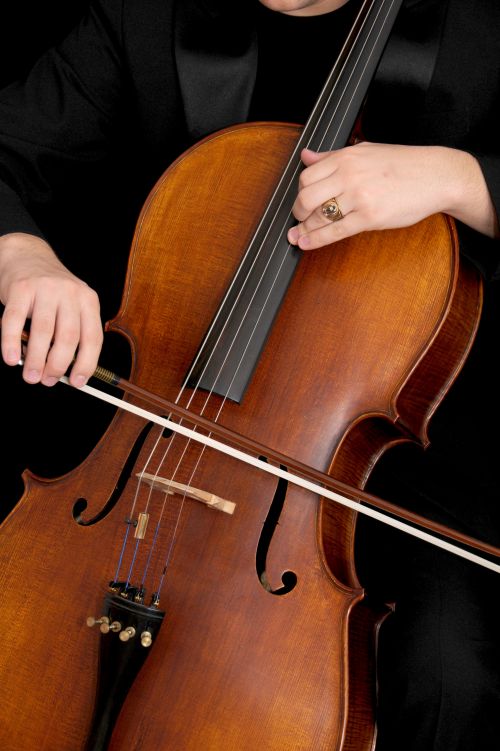Music | November 8th, 2017

Art often inspires other art across the fragile boundaries of medium. Literature, the visual arts, and music have all drawn inspiration from each other over history, perhaps even more frequently now in our lightning-fast Information Age. Classical music is no different, drawing inspiration from as wide-ranging source material as mythology, literature, paintings, and historical events.
Regardless of one’s religious affiliation, it’s impossible to understate the influence of the Holy Bible on all different artistic media over the centuries. Despite changes in society, culture, values, and technology, the millennia-old scripture has provided inspiration for generations of artists.
Perhaps it is in this spirit that the St. John’s Abbey in Collegeville, Minnesota commissioned the St. John’s Bible Project. The first fully illuminated Bible to be produced in centuries, the project brought together professional calligraphers, artists, and clergy to illuminate and illustrate a Bible that demonstrates the timelessness of the verses contained within.
The project utilized a modern, largely non-gendered translation of the Bible and the illuminations portray a modern sensibility, coupled with our improved scientific knowledge of the world around us.
“It’s a hand-scribed Bible of the future,” said Linda Boyd, executive director of the Fargo-Moorhead Symphony Orchestra. For example, illuminations of the book of Genesis illustrate our current scientific understanding of the origins of man out of Africa, and other portions of the Bible project highlight the prevalence of science and technology in our everyday lives and our changing relationship with the natural world.
The Fargo-Moorhead Symphony Orchestra’s music director and conductor Christopher Zimmerman drew inspiration for the upcoming concert in the orchestra’s Masterworks series from the St. John’s Bible Project, which currently has its illuminations in the Hjemkomst Center in Moorhead.
The concert includes pieces that draw inspiration from both the Old and New Testament, as well as wordless spiritual expression. The concert, aptly titled “The Illuminated Soul -- Music Inspired by the Saint John’s Bible Project,” is a collaboration with the “Illuminating the Word: The St. John’s Bible” exhibit currently at the Hjemkomst Center through the end of the year.
The first two pieces to be performed at the concert will feature guest performer Inbal Segev, an Israeli-born cellist. Her impressive resume includes being a founding member of the Amerigo Trio and performing with award-winning orchestras from around the world, among many other achievements.
The first piece is a rendition of “Ave Maria” composed by the 19th century German Romantic composer Max Bruch. Bruch is known for the complex and well-structured nature of his works, which was considered very much in the school of music associated with Johannes Brahms.
The second piece of the evening, also featuring guest cellist Segev, is titled “Schelomo,” the Hebrew equivalent of the name Solomon. The piece is composed by Ernest Bloch, a Swiss-born American Jewish composer, who very well may have drawn inspiration for the work, also subtitled “A Hebrew Rhapsody,” from the earlier work of Bruch.
After intermission, the concert continues with a performance of “Death and Transfiguration” by the late 19th/early 20th century German composer Richard Strauss. Perhaps best known outside of the concert hall for the overture to his piece “Thus Spake Zarathustra,” inspired by the philosophical work of the same name by Friedrich Nietzsche, Strauss was a highly prolific composer, writing pieces for orchestra, opera, and more. The particular piece to be played, “Death and Transfiguration,” is a wordless “tone poem” for full orchestra, depicting an artist reminiscing over his life as his end swiftly approaches, only to become transfigured through death.
The final piece of the evening is composed by contemporary American composer Christopher Theofanidis, entitled “Rainbow Body.” Bringing the evening to a close, the piece is loosely based on a 12th century piece of ecumenical music called “Ave Maria, o auctrix vite,” and also draws inspiration (and its title) from the Tibetan Buddhist notion of the “rainbow body,” where an enlightened being’s body is absorbed back into the universe after death.
Also at the concert, there will be prints and full-color reproductions of several of the pages from the actual St. John’s Bible Project that inspired the concert, courtesy of the Hjemkomst Center, in the lobby of the concert hall. They can be viewed by the audience before the show, during intermission, and afterwards.
The combination of spiritually enriching art and music is bound to lift the hearts of all those in attendance, regardless of their widely varying spiritual and religious inclinations, in a way that the arts have been able to accomplish for centuries, and most likely will far into the future.
IF YOU GO
The Illuminated Soul
Saturday, Nov 18, 7:30pm; Sunday, Nov 19, 2:30pm
NDSU Festival Concert Hall, 12th Ave N & Bolley Drive, 701-478-3676 Tickets: https://tickets.fmsymphony.org/eventperformances.a...
September 16th 2025
August 19th 2025
June 9th 2025
February 18th 2025
November 13th 2024


_(1)__293px-wide.png)
_(1)__293px-wide.jpg)
__293px-wide.jpg)
